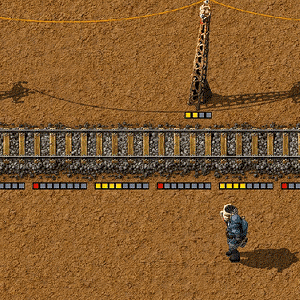Personal roboport MK2: Difference between revisions
Jump to navigation
Jump to search
No edit summary |
(New infobox organization.) |
||
| Line 1: | Line 1: | ||
{{Languages}} | {{Languages}} | ||
{{:Personal roboport MK2 | {{:Infobox:Personal roboport MK2}} | ||
{{Stub}} | {{Stub}} | ||
Revision as of 16:41, 19 July 2017
| Personal roboport MK2 |
|
Recipe |
|
| + + + → | |
|
Total raw |
|
| + + + + + + |
|
Recipe |
|
| + + + → | |
|
Total raw |
|
| + + + + + + |
|
Stack size |
20 |
|
Dimensions |
2×2 |
|
Energy consumption |
4 MW (electric) |
|
Robot recharge rate |
4×1.0 MW (electric) |
|
Internal buffer recharge rate |
3.5 MW (electric) |
|
Placed in |
|
|
Robot limit |
25 |
|
Charging stations |
4 |
|
Energy capacity |
35 MJ (electric) |
|
Construction area |
40×40 tiles |
|
Prototype type |
|
|
Internal name |
personal-roboport-mk2-equipment |
|
Required technologies |
|
|
Produced by |
|
| This article is a stub, and not comprehensive. |
|---|
| You can help this wiki by expanding it. |
Allows construction bots to work from your inventory.
- Just like other robots, if a personal robot runs out of energy it will reduce its speed but continue its attempt to catch up with the player.
It supports significantly more robots (25, versus 10 for the Mk1) and a larger area (40x40 rather than 30x30)
History
- 0.15.0:
- Introduced
